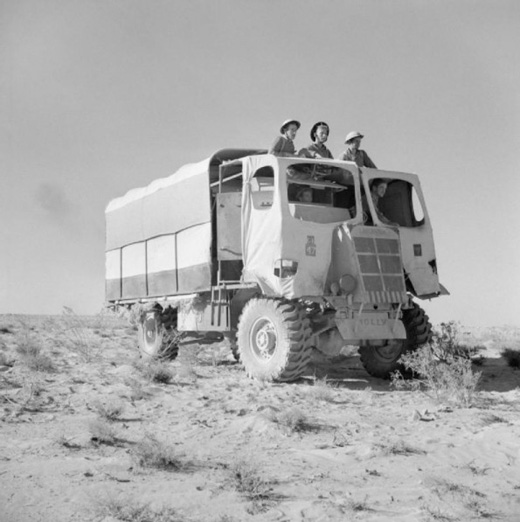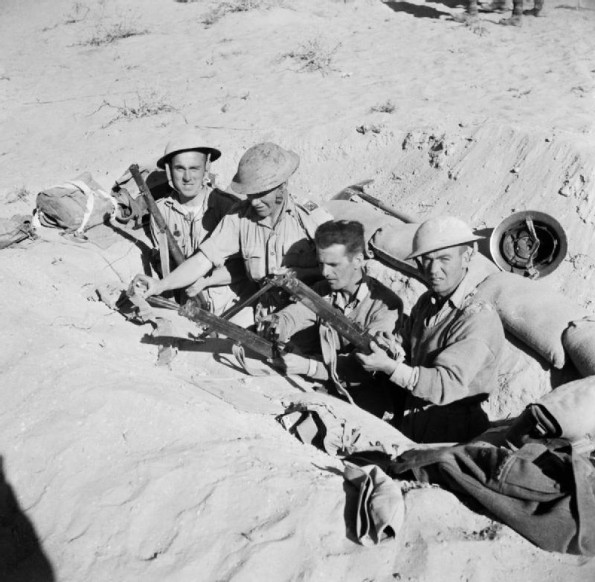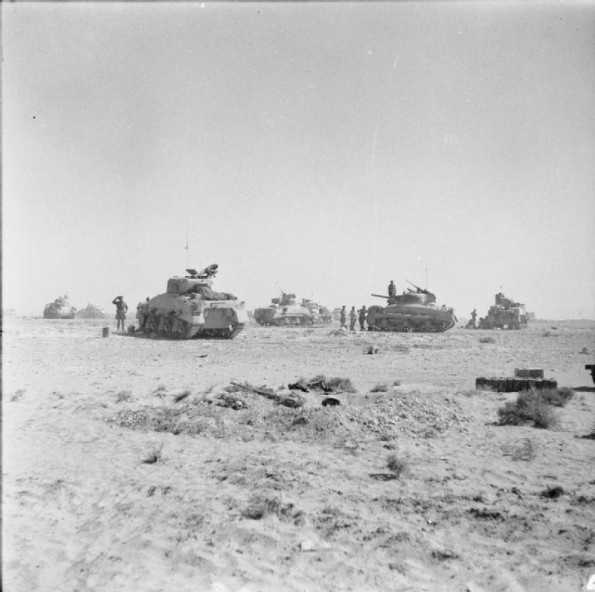Air Operations, CBI
- 11th Medium Bomb Squadron B-25s based in western China attack the airfield at Lashio, Burma.
- 23rd Fighter Group P-40s down 2 Japanese fighters over Mengtze during an afternoon encounter.
Air Operations, Egypt
- 57th Fighter Group P-40s, mounting a surprise low-level dawn raid against the Fuka Bbagush landing ground, destroy several parked aircraft, motor vehicles and tents.
- During the afternoon, while on their way to attack another Axis landing ground, 8 bomb-laden P-40s engage a formation composed of 20 Italian Air Force CR-42 biplane fighters, 20 Luftwaffe Ju-87 dive-bombers, and 20 Bf-109 fighters. 4 CR-42s and 3 Bf-109s are downed by a 64th Fighter Squadron pilot.
- No USAAF fighters are lost.
- 12th Medium Bomb Group B-25s, escorted by 57th Fighter Group P-40s, attack German army tanks, motor vehicles and other ground targets in and arount Matruh.
Air Operations, Europe
BOMBER COMMANDDaylight Ops:
- 8 Mosquitos are sent to Flensburg, Belgium and Holland.
- 2 Mosquitos bomb a shipyard at Flensburg; 4 others bomb several unidentified targets.
- There are no losses.
- 36 aircraft lay mines between St Nazaire and the Frisians; there are also 4 OTU sorties.
- There are no losses.
Air Operations, New Guinea
3rd Light Bomb Group A-20s attack ground targets in the Owen Stanley Mountains. V Fighter Command P-40s escort RAAF medium bombers against shipping targets D'Entrecasteaux Islands.
[Air Operations, North Africa
Allied fighters rout a large force of Stukas attempting to bomb British forward positions west of Alamein.
[Battle of El Alamein
While the British command is mostly concerned with regrouping, Rommel launches a series of counterattacks against the British line, mainly against the 1st Arm Div. by his armor. These attacks result in a further reduction in the number of his own tanks. At the end of the day 61 of the 15th Pzr Div's tanks and 56 of the Littorio Div's have been destroyed or captured by the Allies. The fighting at Tell el Aqqaqir is exceptionally fierce. The British 7th Arm Div is detached from the XIII Corps and moved to the northern sector of the front.
|
|
A 6-pdr Anti-Tank Gun Semi-Armored Portee |
 |
Battle of Santa Cruz
Adm Nagumo returns to the battle area in morning. He transfers his flag from the destroyer Arashi to the carrier Zuikaku. They searches for the Americans but find nothing. In the evening he calls off the operation to return to Truk.
It is a Japanese victory, but they have let the Enterprise (CV-6) escape which enrages Yamamoto. Upon Nagumo's return to Truk he is transferred to become commander of Sasebo Naval Station in Japan.
[Battle of the Atlantic
- Fortress 'F' of No 206 Squadron is providing cover for convoy SC-105 when U-627 is sighted at 1125. 7 depth charges are dropped as the U-boat dives. After the explosions clear a patch of light, iridescent oil is visible on the surface.
- German submarines attack Convoy HX-212 as it is sailing toward the British Isles. The US tanker Gurney E. Newlin (8225t) is torpedoed by U-436 with the loss of 3 of her crew. The rest of the 37-man crew and the 19-man Armed Guard, abandon the ship in 3 boats and 2 rafts. They are rescued by the Canadian corvette Alberni and the Canadian tanker Bic Island.
| Class | Type VIIC |
| CO | Kapitänleutnant Robert Kindelbacher |
| Location | Atlantic, SW of Iceland |
| Cause | Air attack |
| Casualties | 44 |
| Survivors | None |
CBI
Generals Wavell and Stilwell map out a plan to conduct an offensive in the Hukawang Valleu of northern Burma. US forces will advance into Hukwang Valley, seize Myitkyina, and link with Chinese forces in Yunnan. US engineers will construct a road from Ledo to Myitkyina, to eventually link with the Burma Road.
[Eastern Front
In Stalingrad the Germans gain ground in the area between the Red October and Barrikady Factories. From their new positions they are able to bring the landing stages on the west bank of the Volga under direct machine gun fire. The remaining Soviet-held areas of the city are now on average about 300 yards deep. Their largest holdings are on the Mamayev Kurgan Hill and in the Barrikady Factory. The Red October Factory and almost all of the Tractor Factory are now in German hands. What remains to the Soviets, however, is very strongly held and fortified.
The Soviet policy has been to commit only small parts of divisions at a time, but German Intelligence has assumed that when these parts have been destroyed the whole unit can be written off. They thus overestimate the Soviet losses and underestimate the size of the Soviet reserves. The Soviet practice of briefly blooding newly assembled divisions in the Moscow sector also contributes to the faulty German appreciations. The Germans tend to assume that these divisions are being held in the central sector when in fact they have been moved south after a brief spell in the front line.
SOUTHERN SECTORThe Germans make minor gains in the Red October and Barrikady factories, bringing the landing stages on the west bank under direct fire. Reinforcements coming into the city have to run the gauntlet of sustained artillery, mortar and machine-gun fire all the way across the river and on the western bank as they try to disembark. Many units suffer heavy casualties even before they enter the battle.
The German 6th Army is exhausted and Paulus has nothing more to throw into the battle, having used up all his reserves.
The German advance in the Caucasus draws closer to Ordzhonikidze as the 37th Army falls Back. German air strikes plague the Soviet withdrawal, causing heavy casualties.
[Guadalcanal
The Japanese offensive is called off. They have suffered 3,500 casualties. The various attacking groups have not been properly coordinated and, therefore, have been defeated in detail. Both sides are now nearly exhausted but the Japanese have lost the initiative.
The Cactus Air Force dive bombers and P-400s attack an 8-gun Japanese AA bty at Kokumbona and destroy a Japanese ammunition dump. They then attack known gun positions and silence them. Henderson has some respite from the 150-mm howitzer fire.
19th Army HQ at Rabaul receives a radio message from Imperial HQ in Tokyo: troops on Guadalcanal must be reinforced and attack must succeed.
Adm Turner hastens his efforts to supply Guadalcanal. The transport Fuller (APA-7) is to deliver two batteries of 155-mm guns with ammunition and stores. The Alchiba (AKA-6) also loaded with stores. They are set to arrive on November 3 at the same time as the 8th Marines. The 8th Marines will soon be followed by an aviation engineer battalion, an army infantry regiment, and the 2nd Marine Raider Bn to replace the 1st Marine Raiders recuperating after heavy casualties and difficult days on Bloody Ridge.
[United States, Planning
Adm Halsey orders Adm Scott to form a new task group centered around the cruiser Atlanta (CL-51), plus 4 destroyers. On October 28th this force steams past Lunga Roads via Sealark Channel, picks up liaison officers from Vandegrift's staff, then bombards Japanese positions as indicated by those officers. They do this all day, retreat out of The Slot during night to keep away from the Japanese night activity, then return the next morning to repeat.
Halsey establishes another task group in South Pacific, Task Group 64.4. It is led by Rear Adm Daniel Callaghan in the cruiser San Francisco (CA-39). Also included in this group are the cruiser Helena (CL-50), and the destroyers Laffey (DD-459), Buchanan (DD-484) and McCalla (DD-488). Its duty is to escort supply ships into Guadalcanal to give Vandegrift and Geiger all the help needed to hold the island. Callaghan would then join other ships, forming a new Task Group 65, and deliver 6,000 troops of the 8th Marines to strengthen Vandegrift's force. Tanks and heavy artillery will also be delivered.
Another carrier group is being formed in Hawaii around the Saratoga (CV-3). It will be commanded by Rear Adm DeWitt C. Ramsey and include 2 cruisers and 8 destroyers. It is sent to join Halsey.
[
